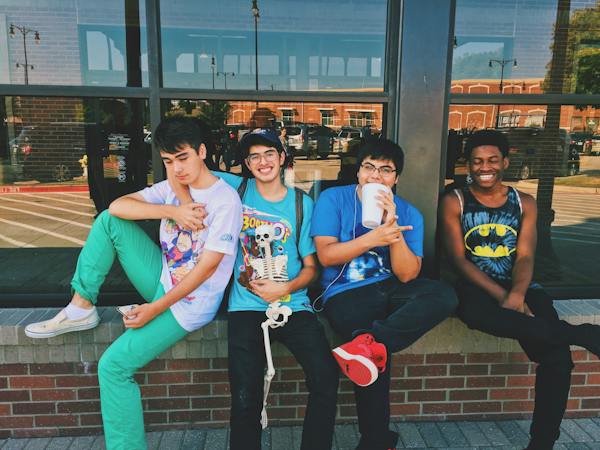
The Troubled Teen Industry In Rural Areas

The troubled teen industry has grabbed headlines for controversial practices and a lack of clear rules. Some folks say we desperately need more government oversight, while others wonder if government programs really help troubled teens the way they should. Let’s dig into whether these programs exist, how well they work, and where they fall short.
Background Information on the Troubled Teen Industry
This industry includes a mix of privately-run residential programs, wilderness therapy camps, and therapeutic boarding schools. These places often target parents who are searching for help with teens struggling with behavior, emotions, or substance abuse. But the industry doesn’t have many regulations, which is a big problem. People worry about exploitation and mistreatment of vulnerable kids.
Lack of Government Oversight
A major complaint is the lack of strong government oversight. Unlike health care or education, there’s no real federal system that specifically covers troubled teen programs. This gap lets questionable practices slide by and makes abuse and negligence way too easy.
State Licensing and Accreditation
Some states have set up licensing requirements for these programs, but there’s no national standard. The rules vary wildly—some states barely check up on these places. National organizations like the Joint Commission or the Council on Accreditation can accredit programs, and that’s a bit of a safeguard. Still, it’s not a fix for everyone.
Government Intervention Programs
Even without tight regulation, some government intervention programs try to help troubled teens. Juvenile justice systems, substance abuse treatment centers, and school counseling services all play a part. These programs aren’t specific to the troubled teen industry, but they do offer some support.
Educational and Therapeutic Services
Public schools also step in with government-funded programs for troubled teens. These might include counseling, special education, or alternative schools designed for at-risk youth. But what’s available (and how good it is) depends a lot on where you live and how much money the district has.
Parental Rights and Advocacy
Government agencies help protect parents’ rights and offer resources to families dealing with troubled teens. Child protective services can step in if there’s abuse or neglect. Advocacy groups and nonprofits sometimes get government funding to raise awareness and push for reforms.
Limitations of Government Programs
Government programs do what they can, but it’s rarely enough. Funding is tight, resources are stretched thin, and the system faces constant challenges. A lot of these interventions just don’t fit the messy, complicated needs of troubled teens.
Calls for Regulatory Reform
Plenty of organizations and lawmakers have called for more regulation. They want federal rules to keep teens safe and make sure programs are actually helping. People see more oversight and transparency as crucial for protecting kids from harm.
International Perspectives and Best Practices
Looking at other countries can offer some hope. Places like the Netherlands and Finland focus on prevention, early help, and community support instead of punishment. Maybe the U.S. could learn a thing or two from these approaches.

Does the Rural Population have Access to the Programs of Troubled youth?
Rural areas often get left behind when it comes to helping troubled youth. Urban and suburban communities usually have more programs, but rural teens struggle to find support. In many rural places, mental health facilities and treatment centers are few and far between. It’s not easy for teens to get help quickly.
Getting to these programs is a hurdle too. Reliable transportation is rare, so even if there’s a program in the next town, getting there can be impossible. Stigma hangs heavy in small towns. Teens might worry about being judged or labeled, so they avoid reaching out for help.
Money is another big issue. Funding is limited, and it’s tough for organizations to set up or keep services running in rural areas. Still, there are ways to bridge the gap. Telehealth services can connect rural teens with counselors and support groups online.
Rural and Urban Partnership
Partnerships between rural and urban communities could help as well. Sharing resources and expertise might make a real difference. Raising awareness and reducing stigma is crucial. Educational programs, town halls, and community events can help normalize mental health conversations. If rural communities create environments where seeking help feels okay, more teens will reach out.
Free Support Programs for Troubled Youth in America
Troubled youth need support, and thankfully, there are free programs out there. Across America, organizations and agencies step up to help—sometimes at no cost. It is therefore important for those responsible of youth affairs to map all the youth service provider organizations to facilitate youth accessibility to the services.
Government-Run Programs
Some states in America run free support programs for troubled youth. The Juvenile Justice Division, for example, operates rehab centers and vocational training spots where teens can turn things around. The states that run youth programs should be taken as role models by other states.
Nonprofit Organizations
Nonprofits do a lot of heavy lifting here. Groups like Boys & Girls Clubs of America offer mentorship, career help, and social activities—no charge for the kids. Governments in developing economies can learn from America and other developed economies so as to save their youth.
Community-Based Organizations
Local churches, youth clubs, and community centers often pitch in. They might offer counseling, after-school programs, or just a place for teens to hang out and grow. It is useful to encourage community leaders to have more of such youth clubs where they can learn and grow positively in life.
Public Schools
Schools play a huge role, too. They provide counseling, special education, and work with mental health pros. Programs like peer mentoring and anti-bullying campaigns help students feel safer about asking for help. In the community we need more dedicated teachers trained in assisting the youth.
Crisis Hotlines and Textlines
Several hotlines offer free, confidential help 24/7. The National Suicide Prevention Lifeline and Crisis Text Line connect teens with trained professionals who care. It is necessary to strengthen this service so that more life of youth are saved and given orientation in life.
Residential Treatment Centers
Some troubled youth need intensive care, and residential treatment centers can provide it—sometimes free. These centers offer therapy, substance abuse treatment, and education. The residential treatment centers are made up of professional individuals who are ready to help the youth in need.
Youth Programs within Human Services Departments
Human Services Departments at the state and local level often run youth programs. These can include life skills classes, job training, and help with things like housing or healthcare. The major purpose of the human service department is to empower youth with skills that can help them manage their own life with little or no difficulties.
Vocational Training Centers
Vocational centers teach academic or job skills, often funded by government grants or philanthropy. They give teens a shot at a better future, without piling on debt. When we have more of similar individuals then we can be sure that the level of inequality in the community will be kept low.
College Scholarships and Grants
Scholarships and grants are out there for teens who need a hand. Programs like the Jack Kent Cooke Foundation and the Gates Millennium Scholars help cover college costs. The works of such organizations help in giving a proper future to troubled youth just like any other youth in the community.
Local Philanthropic Initiatives
Local donors and foundations also step up. They create grants and scholarships for troubled youth, opening doors that might’ve stayed shut. This should be an opportunity for all individuals to come up for assistance of the troubled youth in our communities.
In America, troubled youth aren’t totally alone. Free programs exist, thanks to government, nonprofits, and communities working together. By investing in these resources, we can give teens the tools and support they need to move forward. Isn’t that what we all want, in the end?







Leave a Reply